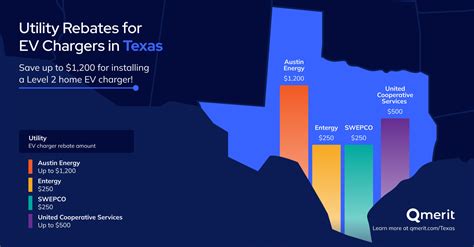Driving Change: How Texas’ 2025 EV Rebate is Shaping the Future of Electric Vehicles
The electric vehicle (EV) market is witnessing unprecedented growth, and Texas is taking significant steps to bolster this transformation. With the introduction of the 2025 EV rebate program, the state aims to incentivize more residents to transition to electric vehicles, ultimately reshaping the automotive landscape, reducing carbon emissions, and fostering economic growth. This initiative not only aligns with national goals for sustainability but also positions Texas as a leader in the energy transition.
The Texas EV Rebate Program: Key Features
Scheduled to officially launch in 2025, the Texas EV rebate program offers a financial incentive for residents who purchase or lease a new electric vehicle. Here are some key features of the initiative:
- Generous Rebates: The program offers rebates that can range from $1,500 to $5,000, depending on the model of the vehicle and the buyer’s specific circumstances, such as income levels.
- Accessibility: To ensure that a diverse range of Texans can benefit, the rebates are designed to be accessible for low- and middle-income families, encouraging wider participation.
- Increased Availability of Charging Stations: Alongside the rebate, the program supports the expansion of charging infrastructure throughout urban and rural areas, making it easier for EV owners to find charging stations.
- Support for Local Manufacturers: The initiative also emphasizes support for local EV manufacturers in Texas, promoting job creation and economic growth within the state.
The Environmental Impact
One of the primary motivations behind Texas’ EV rebate program is the significant environmental benefits that come from reducing reliance on fossil fuels. Electric vehicles produce zero tailpipe emissions, which can lead to improved air quality and reduced greenhouse gas emissions. As Texas grapples with air quality issues and the impacts of climate change, encouraging the adoption of EVs can play a crucial role in mitigating these challenges.
The rebate program aligns with Texas’ broader goals to achieve cleaner energy production and consumption. By incentivizing EV purchases, the state aims to decrease its carbon footprint and contribute to national and global climate goals. Furthermore, a shift towards electric vehicles could significantly reduce the state’s dependence on oil, diversifying its energy portfolio and promoting resilience in an evolving energy landscape.
Economic Growth and Job Creation
The Texas EV rebate is not just about environmental change; it’s also a catalyst for economic advancement. As more consumers purchase electric vehicles, demand will rise for innovative technologies and manufacturing processes. This opens up job opportunities in sectors such as battery production, electric vehicle assembly, and renewable energy technologies. Additionally, as charging infrastructure expands, new businesses will emerge to support the growing market.
Texas, already home to several prominent automotive companies, including Tesla, is poised to become a hub for EV manufacturing. With the influx of investments spurred by the rebate program, the state could significantly increase its production capacity and further bolster its position in the global automotive industry.
Public Awareness and Education Initiatives
The success of the EV rebate program hinges not only on financial incentives but also on public awareness and education. Understanding the benefits of electric vehicles is critical for potential buyers. The Texas government has initiated outreach campaigns to educate Texans about the advantages of EVs, including low operating costs, reduced maintenance, and environmental benefits.
Additionally, workshops and informational seminars will be offered to help residents navigate the EV purchasing process, including information on available rebates, EV types, and charging solutions. By empowering consumers with knowledge, the state aims to foster a more informed and engaged populace in the shift toward sustainable transportation.
Challenges Ahead
While the Texas EV rebate program presents numerous advantages, it is not without its challenges. One of the significant hurdles is overcoming the perception that electric vehicles are too expensive or impractical for daily use. Additionally, the adequacy of charging infrastructure in rural areas presents another obstacle, as many potential users may hesitate to purchase an EV without confidence in available charging options.
Moreover, there is a concern regarding the environmental impact of battery production and disposal. Ensuring that EV manufacturing processes are sustainable will be crucial to the program’s credibility and overall environmental goals.
Conclusion
The 2025 EV rebate program in Texas marks a pivotal moment in the state’s journey toward a sustainable and economically vibrant future. By encouraging the adoption of electric vehicles, Texas is taking crucial steps to reduce emissions, enhance air quality, and spur job creation in the green economy. While challenges remain, the commitment to education, infrastructure development, and support for local manufacturers will be essential to realizing the full potential of the EV market. As Texans embrace electric vehicles, they contribute not only to a sustainable future but also to a thriving economy.
FAQs
1. Who is eligible for the Texas EV rebate?
Residents of Texas who purchase or lease a new electric vehicle may be eligible for the rebate. The amount of the rebate varies based on the model and the buyer’s income level.
2. How much can I receive from the rebate program?
The rebates can range from $1,500 to $5,000, depending on the vehicle and eligibility criteria.
3. When will the program officially launch?
The Texas EV rebate program is set to officially launch in 2025.
4. Will there be charging stations available as part of the initiative?
Yes, the program includes support for expanding charging infrastructure across Texas, making it easier for EV owners to find charging stations.
5. What are some challenges the program might face?
Challenges include overcoming perceptions of EV costs, ensuring adequate charging infrastructure in rural areas, and addressing environmental concerns related to battery production and disposal.
This HTML format includes structured content with headings, paragraphs, and lists that are suited for a WordPress post. The article covers key aspects of Texas’ EV rebate program while also addressing potential challenges and providing a conclusion and FAQs.
Download Texas Ev Rebate 2025
